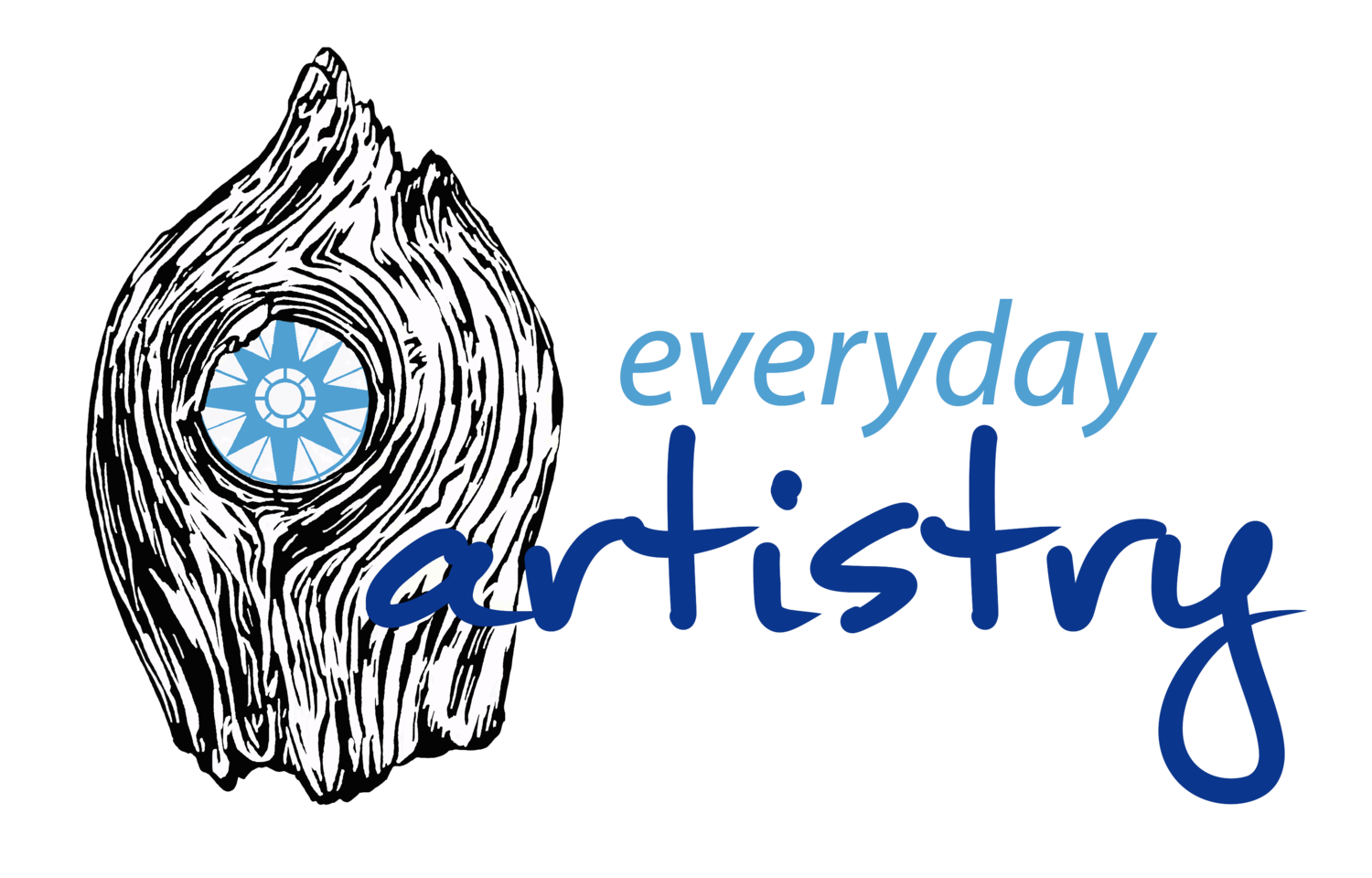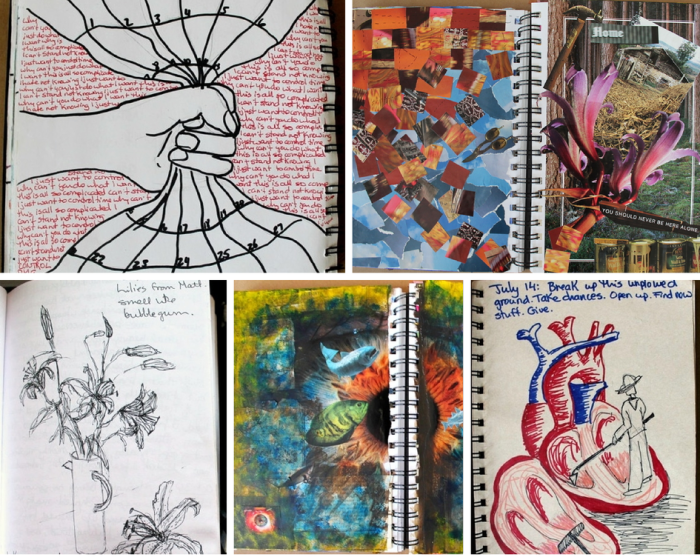 Last week I wrote about my experiences with journaling and apparently I'm not ready to let the subject go since this week I want to talk about visual journaling - about how I got into it and how you can get started.
Last week I wrote about my experiences with journaling and apparently I'm not ready to let the subject go since this week I want to talk about visual journaling - about how I got into it and how you can get started.
What is a visual journal?
Any form of record keeping that uses images can be described as a visual journal. In the book, Drawing from Life: The Journal as Art, Jennifer New explains that the word journal can be used almost interchangeably with sketchbook, field notes, notebook, or logbook. Visual journals are most frequently associated with artists, but they can also be kept by scientists, musicians, travelers, parents, or anyone who wants to keep track of their ideas and observations. In fact, rather than dividing her book into sections based on disciplines, New called her chapters Observation, Reflection, Exploration, and Creation - though most journals contain a little bit of everything.
New explains the magical properties of visual journaling:
"Visual journals are created in a secret language of symbols. Intentional or not, they are private maps only their makers can follow. No one else can look at a page and understand the specific meaning of a punching bag or a set of arrows. And no one else can remember the moment of its making. Joni Mitchell blaring on the stereo. Sage wafting in a hidden garden. The discomforting echo of last night's argument.
That said, visual journals may provide stronger records of the cultural milieu in which they were created than their purely written counterparts. Rather than describing the stuff of the day, they are often made from it. Anyone who has used primary source materials for research knows this. The difference between reading about someone's life and opening old, yellowed letters is startling. When pressed flowers and handwritten recipes escape from a tattered envelope, one can almost see hollyhocks growing in the garden and smell bread baking in the oven."
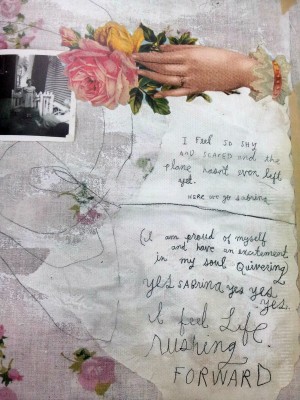
How I got started
As with many things, I first became interested in visual journaling when I saw someone else doing it. Somewhere I stumbled on the books of Sabrina Ward Harrison, who became famous for her "visual memoirs" - messy, chaotic art journals that vividly capture the rawness of certain moments in her life.
In the introduction to Messy Thrilling Life, ward explains:"This is a document of how we can traipse about wondering how we can devise plans and theories on how to make life feel better, more safe and right, more beautiful, and how all the while our life, this big messy thrilling life, is waiting for us to step into, to dance to, to write about and to live. This is a book about doing just that."
Her words are mingled with photographs streaked with paint, pieces of detritus from her daily life, and collaged paper dolls and vintage images from the covers of sewing patterns. She draws herself as a sad-eyed girl with pursed lips, staring out of the pages, watching and wondering. The pages of her books showed me how beautiful the art of visual storytelling can be, and gave me the desire to move beyond the written word in my own journals.
It's clear that journals like this are not made on the fly - they cannot be carried around in a purse and worked on casually. These take serious commitment. I was never quite so committed in my visual journaling efforts. I started when I was in University, and between classes, a part-time job, writing papers, rehearsals for theatre projects, and a social life, it was simply impossible to find hours for exploring in a journal. I would make a quick collage, or an even quicker drawing, before racing off to my next commitment. My efforts were sporadic and often disappointing, but it was enough to give me the desire to press on and to experiment more with different ways to tell my own story. Now I carry a small notebook with me to record observations, feelings, and quick sketches, and I have one at home for more elaborate collages. Though I may go months without creating an image, I always find myself returning eventually to this satisfying form of creative exploration.
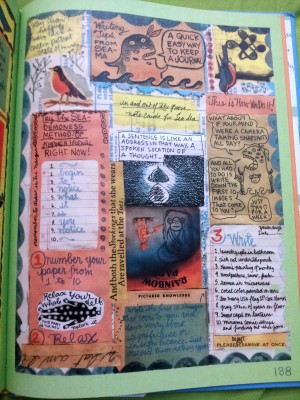
Your turn
You don't need to spend money or have the right materials to start journaling. Cartoonist Lynda Barry uses a yellow legal pad because it reminds her that she's just playing. You can use computer paper, old notebooks, or whatever you can find.
If, like I was, you're excited to get moving but don't know where to start, here's a suggestion from Barry's memoir/creative instruction manual What It Is:
1. Number your page from 1 to 10.
2. Relax.
3. Write down the first 10 images that come to your mind from the day before, regardless of significance.
I would then add the fourth step of choosing one or two (or ten!) of those images and finding a way to represent it visually. Can you find pictures in a magazine to evoke your image? Can you sketch a literal version or even a rough cartoon version? (stick figures can be surprisingly evocative!) If you took a photograph, can you play around with the photograph, adding text or doodles? Do you have any physical objects you can include, such as napkins, paper bags, coffee cups, feathers, or flowers?
Give yourself room to play, to experiment, and most importantly, to make mistakes. Go easy on yourself. The point of this practice is not to create works of art. For every page I made that turned out nice enough to show on this blog, there were 10 that I wouldn't want to show to anyone. I had to remind myself over and over that this was an experiment and that no one would be judging my work.
Think about all the different subjects you can explore in your journal: your emotions, your dreams (the collage with the fish at the top of the page was based on a dream I had), your experiences/memories, your favourite moments with friends and family, the things you notice throughout your day. Or, if you prefer not to use yourself as the subject, you can record what's growing in your garden, how your city is changing, or world events. Anything that involves noticing and interpreting what you find.
Once you've gotten a feel for what medium you enjoy working in and what subject matter you want to explore, then you can start collecting the materials you want to use. Decide if you want to carry the journal around with you, or leave it at home. Find a routine that works for you. You could leave it out and do a few minutes a day, or work on a page until it's finished. You can cram a ton of things onto one page, or spread them out. For more inspiration, look for the books I mentioned in this post at your local library. Have fun!
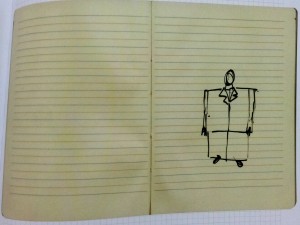
Have you ever tried visual journaling? What does it add to your creative practice? Leave a comment below!
